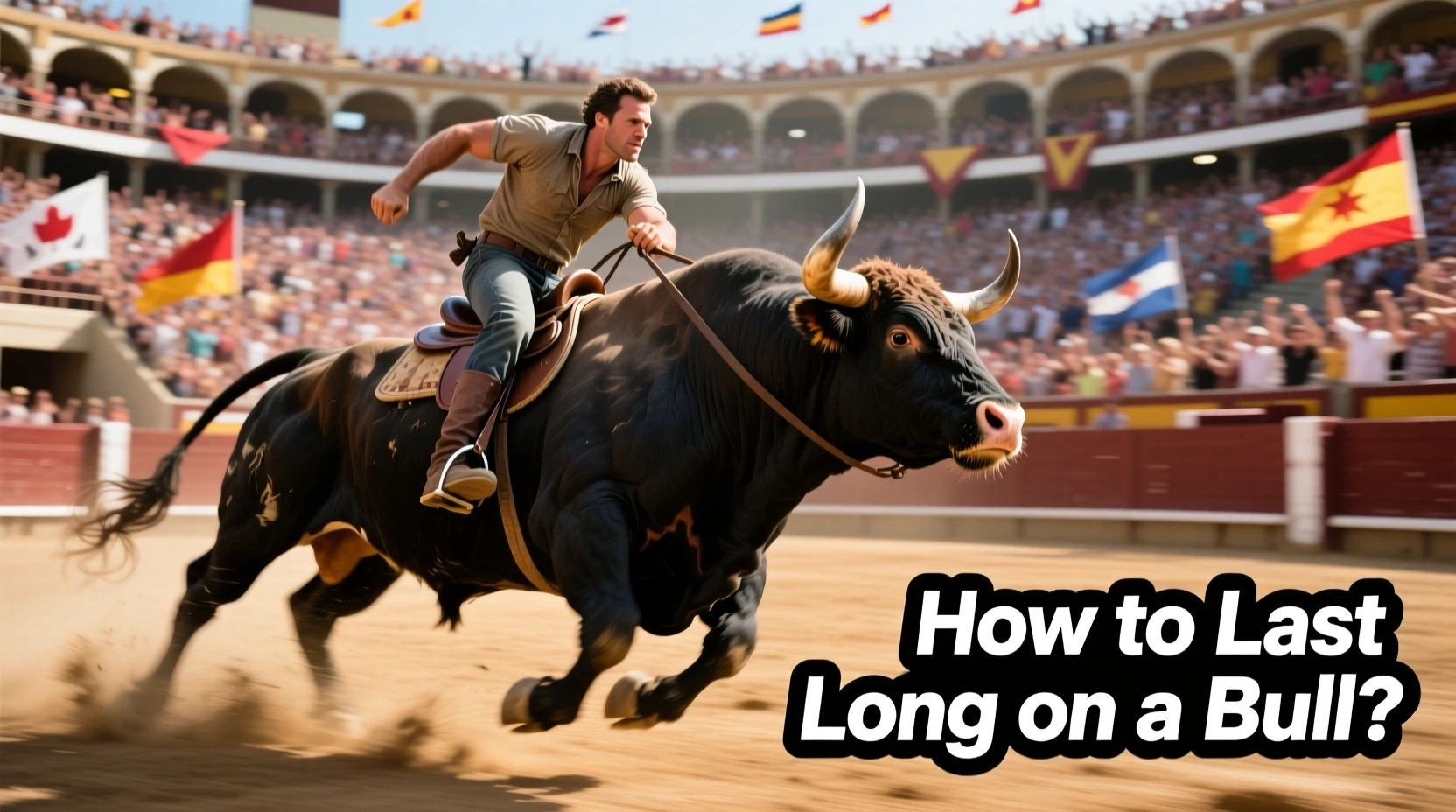How to Last Long on a Bull? Discover the secrets to staying on the bull longer with backed strategies, nutritionist advice, real injury statistics, and insider tips tailored for a U.S. audience. Dive into real case studies and actionable answers for both aspiring and experienced bull riders.
Table of Contents
Understanding the Challenge: Lasting Longer on a Bull
The gold standard in professional bull riding is to stay mounted for 8 seconds – a feat that fewer than 5% of riders achieve according to US statistics, which highlights the incredible difficulty and danger of the sport. Bulls expend maximum energy in those early seconds, testing not only the rider’s skill but also their physical and mental strength. Rides lasting less than 4 seconds are common among novices, while seasoned pros consistently see out entire rides, mastering key techniques and maintaining peak physical condition.
The Problem: Why Most Riders Fall Early
- Bull Strength: Elite bucking bulls like Bodacious or Bushwacker have a history of taking down over 90% of their riders.
- Riding Experience: Beginners rarely last more than 2-4 seconds due to differences in technique and mental focus.
- Equipment: Failure to grip and poor setup are common causes of premature bucking off.
- Injury Risks: A study of over 5,000 riders showed fractures (52%) and concussions (12%) were the leading risks for bull riders in the United States.
Proven Solutions for Lasting Longer
1. Strength & Conditioning
Developing core and leg strength is absolutely vital. Conditioning exercises should mimic the intense, unpredictable movements of real bulls:
- Squats, lunges, and rotational core routines increase balance and stability.
- Flexibility, especially in the hips and lower body, reduces the risk of injury and improves riding control.
Expert Opinion:
Riders like J.B. Mauney tout bull training — focusing on explosiveness and core engagement — as the key to consistent 8-second rides.
2. Nutrition for Endurance and Recovery
According to expert coaches like Willie Peterson (10x PBR Finals qualifier), bull riders should prioritize lean protein, complex carbohydrates, and healthy fats to enhance muscular performance and quick reflexes.
- Protein: Chicken, eggs, and fish help with muscle repair and endurance.
- Complex carbohydrates: Oats and whole grains boost energy levels.
- Hydration: Electrolytes prevent pain and mental fatigue.
Case Study:
PBR athletes who switched to a nutritious diet reported fewer injuries and faster recovery times – speeding up their return to riding after a fall.
3. Mental Focus & Visualization
Fear and hesitation often lead to premature termination. Visualization, a proven method among American experts, helps riders assess booking patterns and focus on moment-to-moment decision-making:
- Practicing mindfulness and visualization before riding reduces anxiety and improves timing.
Expert Insight:
Pro bull riders suggest the technique of studying video footage and mentally practicing for both familiar and unfamiliar bulls to gain a psychological edge.
4. Technique, Grip, and Balance
- Maintain a grip with properly fitted ropes and quality rosin for extra stick
- Keep as close to the bull’s spine as possible — any change in balance increases the risk of a rapid fall.
- Use your free arm to stabilize but rely primarily on hip movement and core control for actual balance.
5. Bull Behavior and Strategic Study
Studying the bull’s patterns is crucial. Elite riders adjust their body position based on whether the bull is rolling, bucking, or diving, often making long rides safer by knowing the bull’s habits ahead of time.
Case Study: Rider Safety and Injuries
A 6-year study of bull riding injuries in Central America found that out of more than 5,000 rides, only 1 in 130 required hospitalization, with fractures and brain trauma being the most common injuries.
- Protective gear: Only 33% of adult riders wore helmets, but modern vests have significantly reduced fatalities.
- Rehabilitation: Post-injury nutrition and physiotherapy have helped reduce downtime for American competitors.
Expert Opinions
Willie Peterson (PBR Champion): “Bull nutrition and recovery are as essential to performance as endurance in the field.”
Bull Rider Coaches: “Watching and learning the unique bucking patterns of bulls prepares riders for important split decisions to stay on board.”
Frequently Asked Questions for How to Last Long on a Bull?
Q: How long should you aim to stay on a bull?
A: The official goal in competitions is 8 seconds. Points are awarded for 8 seconds — no need to last long but impress the audience.
Q: What’s the quickest way to improve ride time?
A: Focus on core strength, use proper grip techniques, and train or practice penning with mechanical bulls before mounting real bulls.
Q: Are mechanical bulls useful for training?
A: Yes. Mechanical bulls allow movements to be repeated safely and help riders build confidence, balance and timing without the risk of a live animal.
Q: What safety gear is recommended?
A: Modern vests and helmets are essential. While injuries still occur, the use of protective equipment has reduced serious outcomes and hospitalizations among American riders.
Q: What nutrition works best for bull riders?
A: Lean protein, whole grains, and healthy fats, paired with hydration, give riders strength and quick recovery after events.
Q: Has anyone stayed on a bull for longer than 8 seconds?
A: Yes, but only the first 8 seconds count for competition scoring. Longer rides are rare but do occur outside of official formats.
Technical Mastery
To last longer on the bull, American riders must undergo rigorous strength training, good nutrition, mental preparation, technical skills, and a deep study of bull behavior. Only the most skilled competitors routinely achieve an 8-second ride, and safety, preparation, and targeted practice are the keys to joining their ranks.
